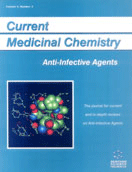Abstract
The production, under environmentally benign conditions, of efficient and more cost-effective anti-infective agents (available to the whole mankind) is one of most exciting dreams of the industrial medicinal chemistry. Semi-synthetic β-lactam antibiotics are very effective anti-infective agents. They are very stable and be can be used via oral delivering. They exhibit a very wide spectrum of anti-bacterial activity and minimal side-effects after being massively used for a very long time. In this way, we can assume that semi-synthetic β-lactam antibiotics are going to continue to be one of the key anti-infective agents for the next years. The condensation of natural or modified antibiotic nuclei with different acyl donor chains is one of the key steps for the industrial synthesis of these anti-infective agents. Up to now, these condensations are mainly carried out through classical chemical methods and it implies a number of economical, ecological and technological drawbacks (high energy requirements, many protection and deprotection steps, utilization of toxic methylene chloride as solvent, etc). Enzyme biocatalysts may be very useful to catalyze these selective condensations under very mild experimental and environmental conditions. In fact, the possibility to use enzymes to carry out such biotransformations, at laboratory scale, has been discussed and demonstrated a long time ago. However, industrial synthesis of beta-lactam antibiotic is still carried out via unfavorable chemical routes. In fact, enzymes have been not designed by nature to act in industrial reactors: they are usually very unstable, inhibited by substrates and products and they may have not ideal catalytic properties for industrial uses (high reaction rates, required selectivity, ability to reach quantitative synthetic yields, stability enough to run a number of reaction cycles, etc). These limitations of enzyme biocatalysis become even more significant mainly when the enzyme is going to be used with non-natural substrates, catalyzing non-natural processes and working under non conventional conditions. However, in the last ten years, a number of papers have reported substantial improvement of these enzymatic synthetic approaches (new enzymes, better enzyme derivatives, improved reaction designs and so on) and it seems that the massive industrial implementation of enzymes in antibiotic synthesis is very close. In these review, we would like to make a critical discussion of these very interesting advances in the application of enzyme biocatalyst for the industrial synthesis of semi-synthetic antibiotics.
 5
5

